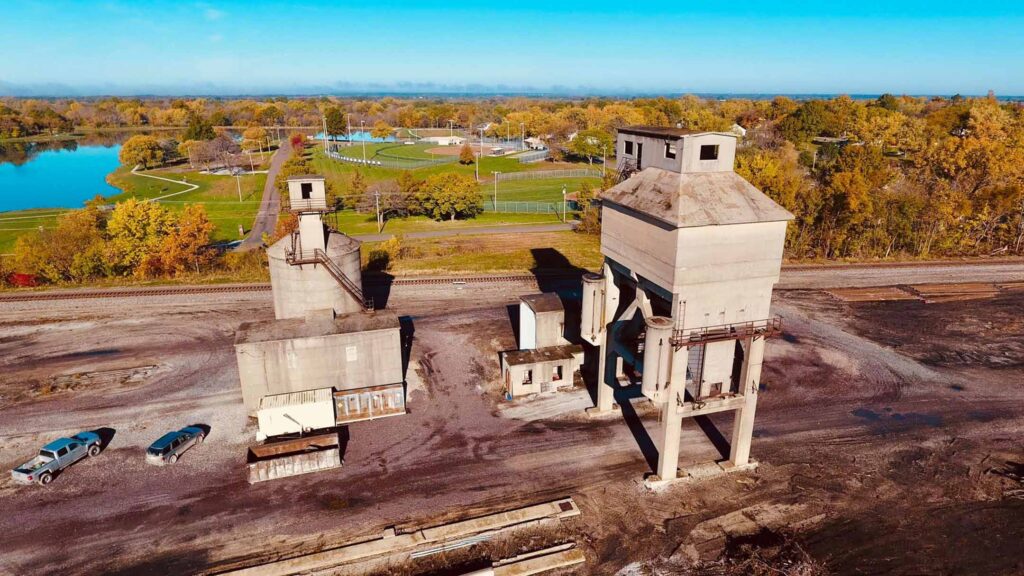The Marceline Santa Fe rail yards were arranged with purpose. On the west side was the “westbound” track for trains that were not stopping at Marceline, and on the east side an “eastbound” track for trains to Chicago, which did not stop here. This practice remains today on the BNSF. Four tracks occupied the center for trains that were being assembled or disassembled, or allowed the locomotive to uncouple to get service. The local switcher could remove or add cars, which allowed the main locomotive to resume its trip.
Next to the westbound track was a track that went through the coaling, sanding, and water spouts. Sand was (and still is) needed to help with traction on the rails. Clean sand was held in a heated concrete tower above the rails. (Heated sand drives out moisture, which could clump the sand or freeze it.) Nearby was the coaling tower, which was supplied with locally mined coal until 1953 when the Santa Fe retired its coal burning locomotives. Some oil burning steamers were kept in service for switching and local pickup and delivery.
The water spout was supplied with local water. Initially water pressure was from a tall standpipe to the east, and across the tracks from the present Fire Station. (Steam locomotives need far more water than fuel.) Indeed, the trip from Los Angeles, CA to Needles, CA – across southern California – required five water stops! Between Barstow and Needles water had to be delivered daily by tank car to make the trip.
The Marceline roundhouse was located on the east side of the main yard and was accessible from the east bound track. there are very few photos or drawings of it. The aerial view shows the “footprint” of its foundation. The roundhouse had a steam boiler to feed steam to the parked locomotives so they could be used immediately year around.
South of the train station stood the Santa Fe freight house. Box cars or flat cars were delivered there with goods or lumber, and later automobiles for local sale. Local folks will remember the letters “M-F-A” on its doors, when MFA used it for storage. BNSF no longer delivered freight here. In 2008 the building was carefully dismantled by Amish workers for the valuable timbers and lumber. It was well built.
The University of Kansas has the old Santa Fe archives, but a search of their archive yielded nothing about Marceline. The original 1888 coal tower was made of wood timbers. The concrete version was built around 1900. The concrete coal tower was demolished in November, 2021.


